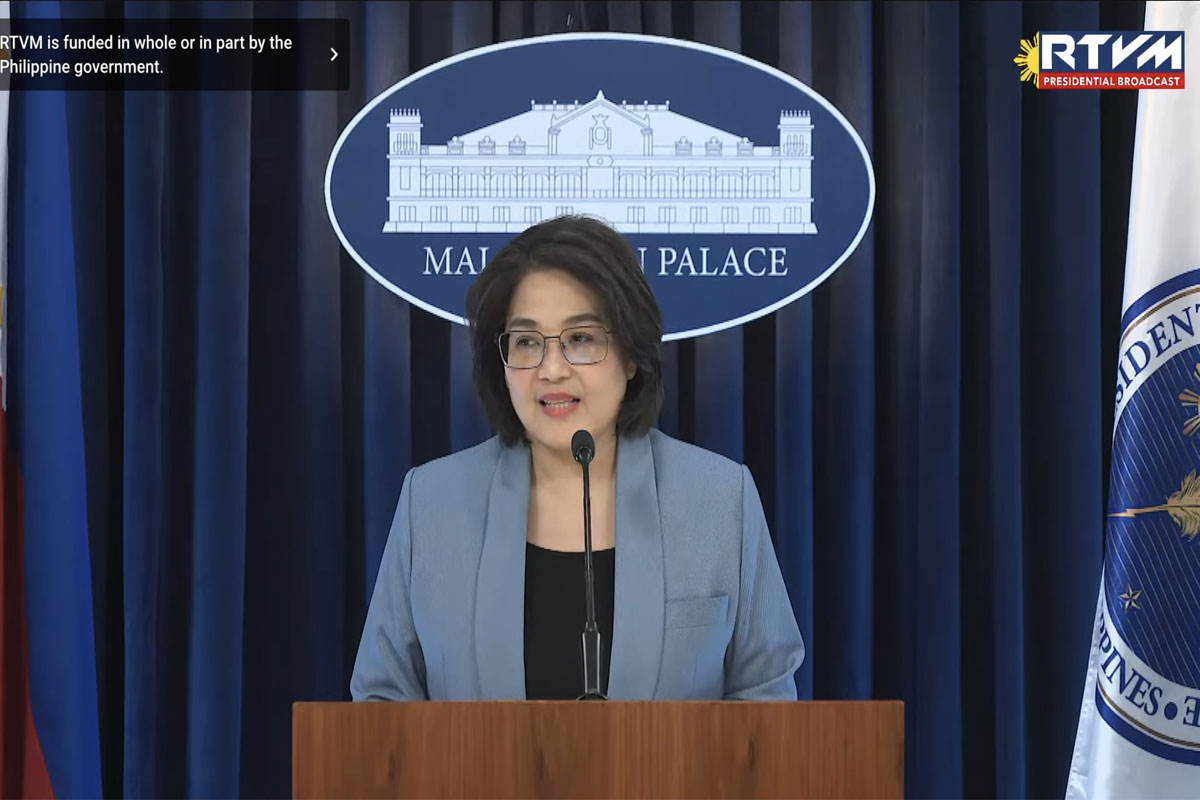
Trimming the healthcare tab
 People just need to focus on what is at hand right now, and right now this issue can get incredibly catastrophic for the rest of the world, not just for that part of the world, and I don’t want people to lose sight of that. — Actress and activist Mila Kunis
People just need to focus on what is at hand right now, and right now this issue can get incredibly catastrophic for the rest of the world, not just for that part of the world, and I don’t want people to lose sight of that. — Actress and activist Mila Kunis
Everyday should be an opportunity to stop harm and save lives.
And doing so would also cut public expenses, especially during this very dangerous and difficult period of conflict, rising commodity prices, and a lingering pandemic.
A prolonged war in Ukraine, or its spillover to other regions, on top of sanctions on the Russian oil sector and exports could push crude and gasoline prices even higher.
Brent crude was trading at $109 a barrel with a 1.9 percent loss, while US benchmark West Texas Intermediate crude was at $105.6, down 2.8 percent.
And while the country’s headline inflation stayed at three percent in February, the Philippine Statistics Authority noted “faster annual increases” in the indices of housing, water, electricity, gas, and other fuels at 4.8 percent; transport at 8.8 percent; and recreation, sport, and culture at 1.6 percent.
According to the Department of Energy’s oil price bulletin, year-to-date net increase in gasoline prices stood at P13.25 per liter, P17.50 per liter for diesel, and P11.40 per liter for kerosene.
To provide a social cushion, the Department of Budget and Management has released P3 billion for the Department of Transportation’s fuel subsidy (P2.5 billion) and the Department of Agriculture’s fuel discount (P500 million) for targeted affected sectors
Socioeconomic Planning Secretary Karl Kendrick T. Chua has said the estimated long-run total cost of the Covid-19 pandemic and quarantines is estimated at P41.4 trillion.
“The present and future costs are estimated at 41.4 trillion pesos in net present value terms. Broken down, in 2020, we lost P4.3 trillion; in the next 10 to 40 years, we estimate that we will lose up to P37 trillion,” Chua said in late September last year.
Chua added that tax revenues would thus be lower if businesses cannot operate at 100 percent.
Thus, making available less harmful alternatives such as electronic cigarettes and heated tobacco products to traditional cigarettes for millions of Filipino smokers would enable the government to reduce the smoking rate and manage healthcare expenditures, international public health policy experts said.
“If we accelerate the declining smoking rate, this will over time reduce healthcare expenditure. Adding vaping to existing tobacco control policies will help accelerate the decline in smoking rates. I very much hope that the Philippines will make it easy for smokers to switch to vaping. This will also require risk proportionate regulation,” said harm- reduction advocate Dr. Alex Wodak.
Wodak, public interest policy consultant Clive Bates, and Dr. Colin Mendelsohn, tobacco-treatment clinician, are among the tobacco harm reduction advocates who said the country should provide smokers with smoke-free alternatives that were proven to have far less risks than combusted products.
The Senate and the House of Representatives ratified the bicameral conference committee report on the proposed Vaporized Nicotine Products Regulation Act in January.
“Vaping has resulted in the accelerated decline in national smoking rates in other countries where it is legally and readily accessible for adult smokers. Other nicotine products such as heated tobacco and nicotine pouches are also safer alternatives to smoking and effective quitting aids. I strongly support legislation to make these products available to adult smokers. This legislation will lead to substantial improvements in public health,” Mendelsohn said.
He said providing such legislation would prevent hundreds of thousands of premature deaths from smoking in the country.
The measure aims to regulate the use, manufacture, importation, sale, distribution, and promotion of vaping and HTPs.
Saying the vape bill strikes a good balance between consumer protection and giving ordinary people access to less harmful alternatives to cigarettes so that they can become smoke-free, Bates expressed hope that President Duterte would support the regulation of vaping and other less harmful alternatives to cigarettes
“The bill sets up an excellent regulatory framework, carefully balancing the needs of people who smoke to access much safer alternatives to cigarettes and the protection of those who do not smoke or use nicotine. This is a fine balancing act and in my view, the bill gets it right,” he said.
“I hope the President will place his signature on the bill and give the Philippines truly independent legislation that will be among the best in the world,” said Bates, who previously worked for the UK government and the United Nations.
He said the Filipino senators and congressmen have “done a good job in drafting sound risk-proportionate legislation that has made its way through intense congressional scrutiny and is now an example of world-class legislation.”
Wodak, emeritus consultant for Alcohol and Drug Service at St. Vincent’s Hospital in Sydney, noted that smoking affects about 1.1 billion globally.
“Up to two out of every three long-term smokers will die from a smoking-related condition. About eight million people around the world die every year from smoking. Most of these deaths are from cancer, heart or lung disease,” he said.
In the Philippines, there remain 17 million smokers, of whom over 100,000 die of smoking-related diseases such as cancer, cardiovascular disease, and lung disease each year.
The Aussie expert said it is time to provide them with less harmful alternatives to cigarettes.
“It is now 20 years since vaping was developed by a pharmacist in Beijing. Commercial forms of vaping started in 2006. Different kinds of studies confirm that vaping is much less dangerous than smoking. Several highly regarded scientific organizations estimate that vaping is at least 95-percent less risky than smoking. Vaping allows smokers to continue ingesting nicotine but without the tars and many other dangerous chemicals contained in cigarette smoke,” noted the director of the Australian Tobacco Harm Reduction Association.
He said harm reduction — the use of less harmful alternatives — would help the country reduce the smoking problem.
“The idea of people continuing to use a psychoactive drug but avoiding most or all of the health, social or economic costs is called ‘harm reduction’. Indeed, the Philippines used harm reduction extensively to minimize the spread of HIV among and from people who inject drugs,” he said.
Other Southeast Asian countries such as Thailand and Malaysia are now seriously considering making it easy for smokers to switch from deadly cigarettes to much lower risk vaping, he said.
“The United Kingdom and New Zealand are examples of western countries which make it easy for smokers to switch from smoking to vaping,” he said.
Mendelsohn, a member of the Expert Advisory Committee of the Royal Australian College of General Practitioners Smoking Cessation Guidelines, said vaping, the most popular and most effective quitting aid in Australia and other western countries, already helped millions of smokers quit.
“It is a far safer alternative to deadly cigarettes for addicted smokers who are otherwise unable to quit,” he said.
The founding chairman of the ATHRA said evidence from other countries shows that these less harmful alternatives can help smokers quit and lead to an accelerated decline in the national smoking rate.
Behold God’s glory and seek His mercy.
Pause, ponder, act, and pray, people.















